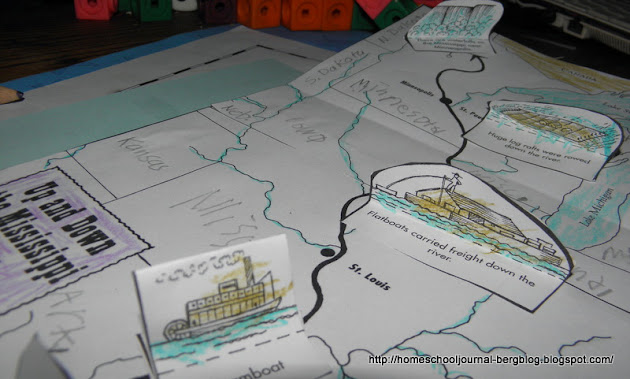Up and Down the Mississippi (1840-1860) and Presidents (1841-45)
This week we looked at the Mississippi River and how it affected the economy in the 1840's through the 1860's. We used the map in Interactive 3-D Maps: American History. Using the map we have been filling out with our Postcard-Geography album, they labeled the states around the Mississippi River.
By the 1840's the South produced more cotton than any other place in the world. The cotton was shipped to textile mills in New England. Steamboats picked up the cotton and transported them down the Mississippi River to New Orleans, which was a major exporting/importing center in America. They would be transported then to Europe. The boats then loaded up with barrels of sugarcane syrup or imported manufactured goods such as cloth. They carried these goods north to cities such as St. Louis, where settlers joining wagon trains were in need of supplies.
Flatboats also traveled the Mississippi, loaded with freight from the north. Lumber, in the form of rafts, which were harvested in the north traveled down the Mississippi for delivery to where homes and businesses were being built
Although this book is set a bit earlier (1811) , it does give the flavor of what it was like to be with the Riverboats on the Mississippi.
 |
| lapbook page from Free Presidents Lapbook |
John Tyler (29 March 1790 – 18 January 1862) was the tenth President of the United States (1841–1845) supported states' rights. Near the end of his life, he supported the secession movement in the southern states, and was elected to the Congress of the Confederate States of America.
James Polk the 11th President of the United States (1845–1849). He split the ownership of the Oregon territory with Britain. When Mexico rejected American annexation of Texas, Polk led the nation to a victory in the Mexican-American War, which gave the United States most of the Southwest. He established a treasury system that lasted until 1913. Polk oversaw the opening of the U.S. Naval Academy and the Smithsonian Institution, the groundbreaking for the Washington Monument, and the first postage stamps issued in the United States.





